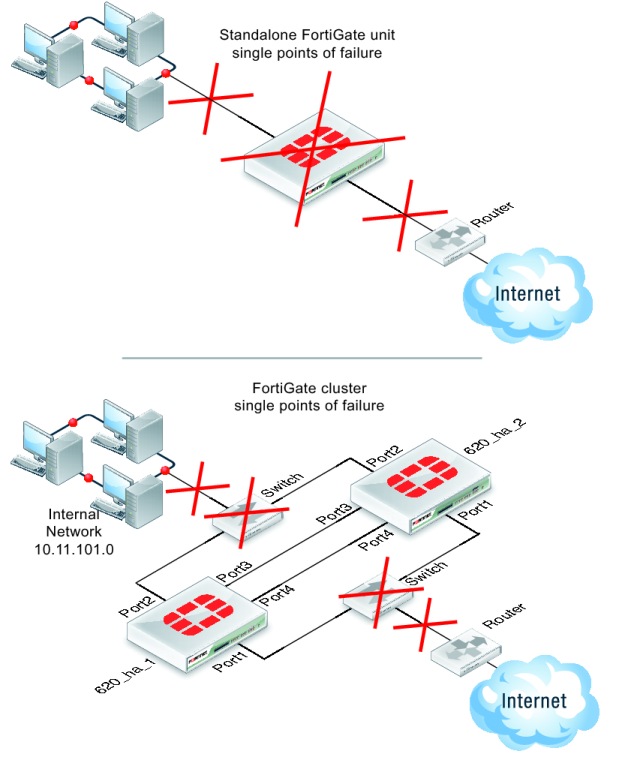Full mesh HA overview
When two or more FortiGate units are connected to a network in an HA cluster the reliability of the network is improved because the HA cluster replaces a single FortiGate unit as a single point of failure. With a cluster, a single FortiGate unit is replaced by a cluster of two or more FortiGate units.
However, even with a cluster, potential single points of failure remain. The interfaces of each cluster unit connect to a single switch and that switch provides a single connection to the network. If the switch fails or if the connection between the switch and the network fails service is interrupted to that network.
The HA cluster does improve the reliability of the network because switches are not as complex components as FortiGate units, so are less likely to fail. However, for even greater reliability, a configuration is required that includes redundant connections between the cluster the networks that it is connected to.
FortiGate models that support 802.3ad Aggregate or Redundant interfaces can be used to create a cluster configuration called full mesh HA. Full mesh HA is a method of reducing the number of single points of failure on a network that includes an HA cluster.
This redundant configuration can be achieved using FortiGate 802.3ad Aggregate or Redundant interfaces and a full mesh HA configuration. In a full mesh HA configuration, you connect an HA cluster consisting of two or more FortiGate units to the network using 802.3ad Aggregate or Redundant interfaces and redundant switches. Each 802.3ad Aggregate or Redundant interface is connected to two switches and both of these switches are connected to the network.
The resulting full mesh configuration, an example is shown in
Figure 200, includes redundant connections between all network components. If any single component or any single connection fails, traffic automatically switches to the redundant component and connection and traffic flow resumes.


